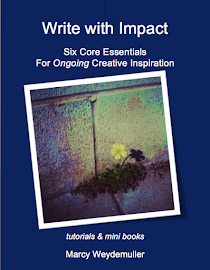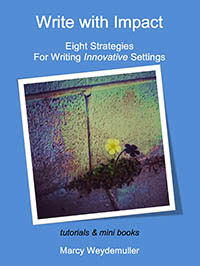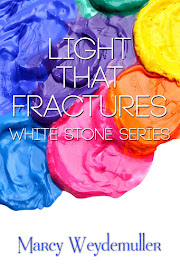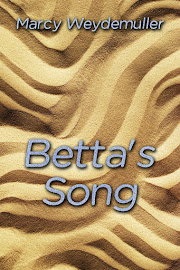 For now though, begin to take notice as you experiment with
ideas what voice you tend to lean towards. Is it quiet or noisy, tentative or
firm, adventurous or cautious?
For now though, begin to take notice as you experiment with
ideas what voice you tend to lean towards. Is it quiet or noisy, tentative or
firm, adventurous or cautious? Thursday, March 26, 2015
Nourish Voice
Workshop: An
Introduction to Writing for Children and Young Adults
“Write for the child within you.” Jane
Yolen
Narration comes in many voices. There is the voice of the
story, or idea and the shape it takes, and there is an author’s voice as well.
Some storytellers can identify their voice fairly quickly and for some it takes
time to develop. Like a musician, for some voices range across many notes and
others take one sound and develop it deeply.
A guest author once shared that he tried to write across
different ages and in different genres but every time he tried at some point
his writing voice became a fourteen to sixteen year old male. So he stayed with
that narrator and wrote deeply.
Author Jane Yolen has written in almost every age and genre
in children’s literature. Story first, she says. She both listens to her
characters and she searches for a connection. “Reach deep inside yourself and find out who you were before you became
what you are, and then you will discover that the child is there, very much
alive, and informing most of your adult decisions.”
Nourishing voice is an ongoing thread that begins with the
seed of idea and develops throughout any project. As we study in this workshop
we’ll be going into more details re voice and also see that voice is integral
whether we’re discussing character or plot or tone.
 For now though, begin to take notice as you experiment with
ideas what voice you tend to lean towards. Is it quiet or noisy, tentative or
firm, adventurous or cautious?
For now though, begin to take notice as you experiment with
ideas what voice you tend to lean towards. Is it quiet or noisy, tentative or
firm, adventurous or cautious?
When you discover the voice that captures your heart chances
are you discover the excitement and passion that writing for any age requires.
Especially for children and young adults because our stories may be their first
glimpse into imagination and new possibilities.
Action Steps:
Go to: http://www.marcyweydemuller.com/resources.html
and scroll down to 31 Creative Freewrites.
1.
Do
brief freewrite notes on numbers 12 to 17 from the idea file. Give yourself 8
to ten minutes per memory to write down everything you can think of. Don’t stop
for sentence structure or punctuation.
2.
Did
your moments all fall into a particular age category or were they spread out? If,
for example, most of your moments happened in grades 4 to six then you are
leaning into a middle-grade voice connection.
3.
Which
ones that you wrote connected the strongest either from a positive or negative
reaction?
Share: Did any of your recollections surprise you? Why?
Read deep, marcy
Thursday, March 12, 2015
Only Connect: Overview Basics
Workshop: An
Introduction to Writing for Children and Young Adults
“An idea is something that makes a sound
in the heart.”
Katherine Paterson
Once in a while
have you ever seen a movie, or read a book, that both friends and critics have
given high applause to, and yet it has left you bored or cold or both? The
quality is evident, no argument, yet still you just don’t respond. A strong
possibility is that the storyline or the underlying threads did not engage your
heart. It did not connect. Talent is a required component to any art form, but
it is not enough if it doesn’t engage with the intended audience. And for the example above, you may not
have been the intended audience.
Only connection
is as high a value as talent in literature for children and young adults.
Actually it is probably higher. It is why some children will cling to a poorly
written story, or ask to hear a song over and over that grates on our nerves.
It may be a concept that doesn’t match any ‘rules’ of a genre, but readers
inhale it like dessert. The classic storybook “Goodnight Moon” does not fall into ‘normal’ guidelines for writing
to that age group, yet it affects all generations with its heart relationship
to that whisper of falling asleep for a child without vocabulary to express
their feelings.
Often when we are writing we are translating. We have an idea—a
character—a feeling—a fear—a hope that we are trying to put into words, to first
translate into something more tangible, and then second to share it with
another person.
 “One thing
we can do is to share with children works of the imagination—those sounds
deepest in the human heart, often couched in symbol and metaphor. These don’t
give children packaged answers. They invite children to go within themselves to
listen to the sounds of their own hearts.” Katherine Paterson
“One thing
we can do is to share with children works of the imagination—those sounds
deepest in the human heart, often couched in symbol and metaphor. These don’t
give children packaged answers. They invite children to go within themselves to
listen to the sounds of their own hearts.” Katherine Paterson
Old Testament prophet Habbakuk first saw a vision, and then was told
to write it ‘plainly’ so that a runner could take it. That’s the craft part of developing our ideas into form:
poem, short story, or article that we can make ‘plain’, make our concepts
understandable.
Only when we are writing for children and young adults it seems,
sometimes, that we are crossing a culture gap as well as generational and we
struggle to find the words. We need to find the connections that bridge our hearts,
and at the same time keeps the imagination free to expand into new ideas—not
packaged ones. New sounds—new stories—new art. Fresh hope.
Action Steps:
1. Write a definition of dream
either as a word or as a concept.
2. Suppose
you were trying to explain this word to someone who doesn’t speak your language.
How would you do it?
3. Then
read, The Dream Keeper, a poem by
Langston Hughes. http://allpoetry.com/The-Dream-Keeper
4. What sound does it make in your heart?
Share: How does his poem connect with your feelings and definition?
Read deep, marcy
Thursday, March 5, 2015
Workshop: An Introduction to Writing for Children and Young Adults
“Talent is not enough.” Mollie Hunter
Welcome to this blog workshop. Over
the next several weeks we’ll be discussing what defines quality for this field
of writing, examining genres and techniques, developing critique and revision
skills, develop written practice of the elements of fiction with an emphasis on
craft, voice, and form, and take a practical look at the publishing market.
Whew!
We’ll take it all in small bites.
And add in lots of space for inter-active questions, discussion, and guest
bloggers. So, share your comments, and concerns, and questions, then if I’ve
missed any they can be covered in their specific posts.
What exactly would you like to
learn/accomplish in this field. Can you already recognize and define the
various genres of children’s literature: picture books, chapter books, reader’s
theatre, poetry, non-fiction, fiction, including
historical-fantasy-contemporary, and multicultural. Or does it all seem a
confusing melting pot?
Why?
 Without
fail every book on writing for children from crib to college asks this question
first. Why exactly do you choose to write for this particular age? Mollie
Hunter says, “the freedom of the
children’s writer can be assessed for what it truly is—freedom with
responsibility.” Katherine Paterson says, “Connecting is a vital, not a minor function. Connecting is what you
and I are primarily concerned with. That’s what imagination is all about.”
Without
fail every book on writing for children from crib to college asks this question
first. Why exactly do you choose to write for this particular age? Mollie
Hunter says, “the freedom of the
children’s writer can be assessed for what it truly is—freedom with
responsibility.” Katherine Paterson says, “Connecting is a vital, not a minor function. Connecting is what you
and I are primarily concerned with. That’s what imagination is all about.”
What
are your individual goals? What is your heart calling to you to write? And why
might talent not be enough? Dig out a fresh journal or begin a new folder.
Start jotting down a conversation with yourself as we explore this vibrant
literature and begin to fine-tune your journey.
Share: Which of
the above quotes do you identity with? Which puzzles you?
Read deep, marcy
Labels:
An Introduction to Writing for Children and Young Adults. Why? Talent,
Connecting,
Free blog workshop,
Goals,
Quality
Subscribe to:
Posts (Atom)










